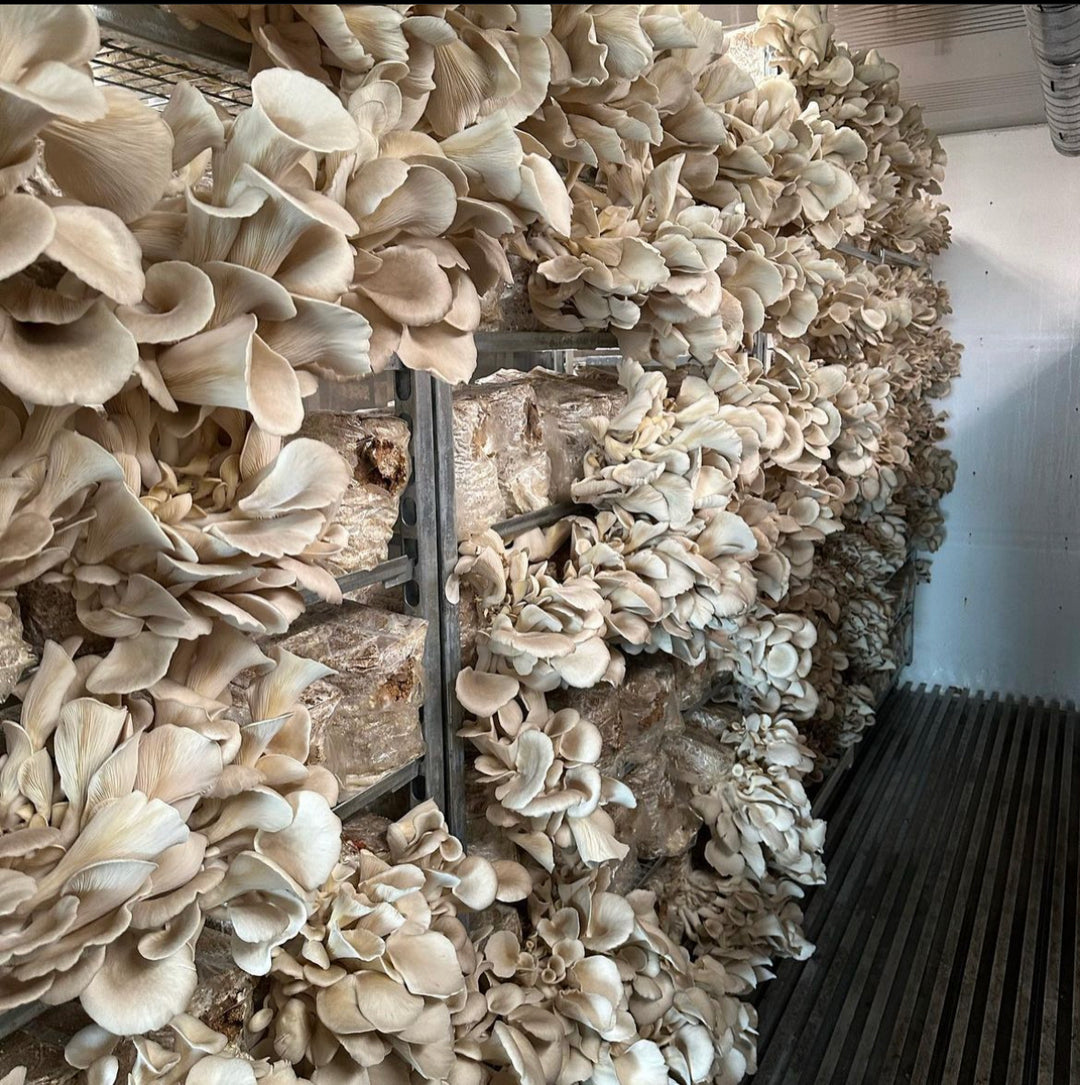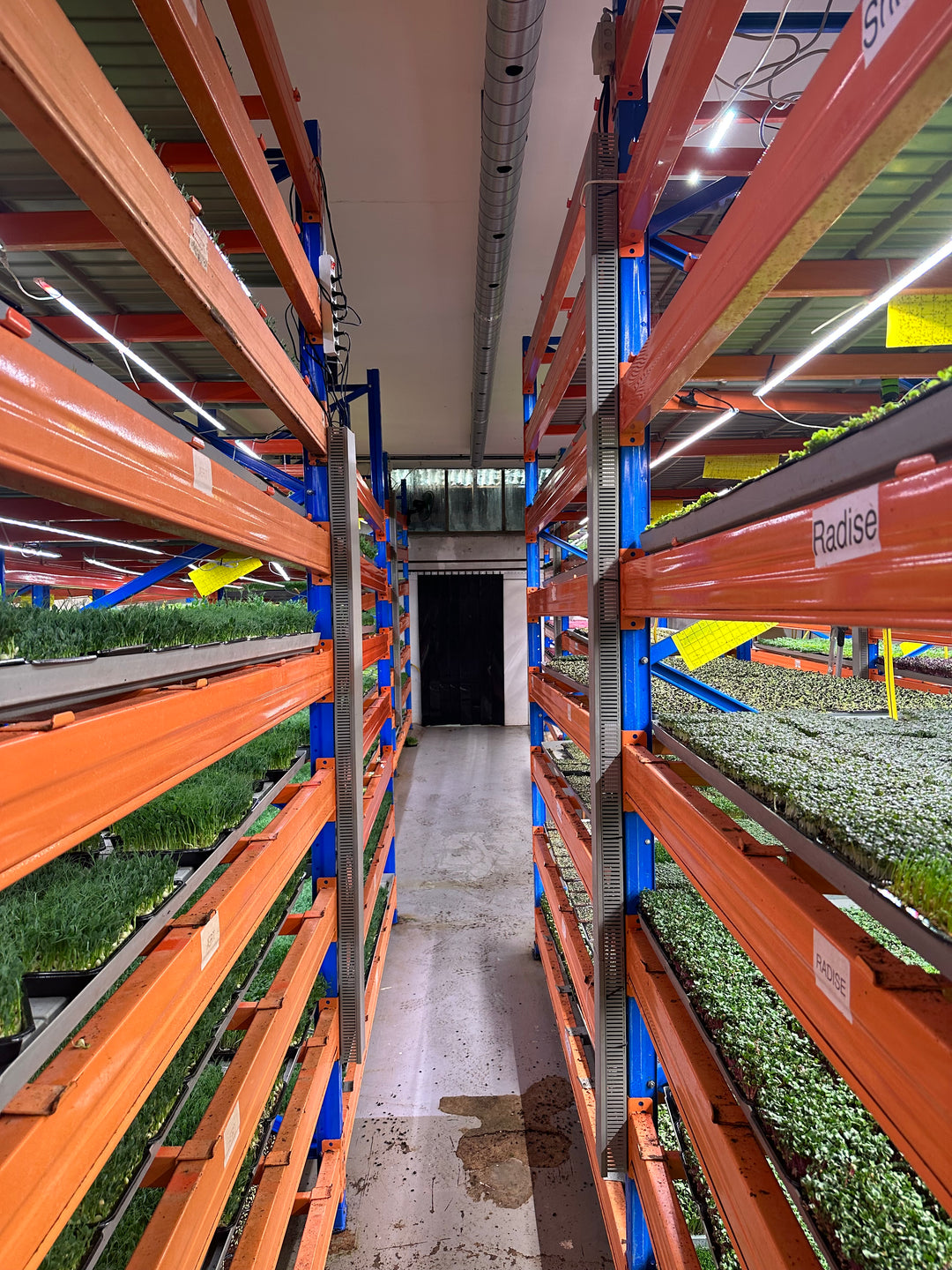Crops worth growing in a vertical farm

Vertical farming is rapidly expanding its crop portfolio beyond the initial focus on leafy
greens. The plants trending for indoor vertical farms, especially those that offer significant
resource savings compared to traditional outdoor farming, share several key characteristics:
Common Traits of Trending Vertical Farm Crops (Resource Efficiency Focus):
● Compact Growth Habit: Plants that don't sprawl widely or grow very tall (unless
they can be easily trained vertically) are ideal for stacked systems. This maximizes
the number of plants per square foot.
● Fast Growth Cycles: Shorter crop cycles allow for more harvests per year,
increasing overall yield and profitability from the same infrastructure.
● High Value and Market Demand: To offset initial setup and energy costs, crops that
command a premium price or have consistent consumer demand are prioritized.
● Low to Moderate Light Requirements (or efficient light use): While LEDs are
energy-intensive, crops that don't demand extremely high light intensity or that
respond exceptionally well to specific LED spectrums become more
resource-efficient.
● Adaptability to Hydroponic/Aeroponic Systems: Plants that thrive in soilless
environments and absorb nutrients efficiently from water solutions are key.
● Minimal Pollination Needs (or easy artificial pollination): Crops that are
self-pollinating or wind-pollinated, or those that can be easily pollinated manually or
with controlled bee colonies, are preferred.
● Pest and Disease Resistance in Controlled Environments: While indoor
environments reduce external threats, some plants are naturally more robust.
Trending Plants for Resource-Efficient Vertical Farming:
1. Leafy Greens (Still King, but Evolving):
○ Examples: Various types of lettuce (butterhead, romaine, iceberg), spinach,
kale, arugula, Swiss chard, bok choy, mizuna.
○ Why they're trending (and efficient): They are the "bread and butter" of
vertical farming. They have very short growth cycles (often 3-6 weeks),
compact forms, high market demand, and respond exceptionally well to
hydroponics and LED lighting. Their high yield per square foot and low
resource input make them a consistently profitable and resource-efficient
choice.
2. Herbs (High Value, Consistent Demand):
○ Examples: Basil, mint, cilantro, parsley, oregano, thyme, chives.
○ Why they're trending (and efficient): Similar to leafy greens, herbs are
compact, grow quickly, and have year-round high demand from both
consumers and the culinary industry. They also adapt very well to hydroponic
systems and benefit from the consistent flavor profile achieved in controlled
environments. The ability to grow unique or higher-quality varieties can
command premium prices.
3. Microgreens (Ultra-Fast Turnover, Nutrient-Dense):
○ Examples: Radish, broccoli, mustard, sunflower, pea shoots, arugula, kale,
basil microgreens.
○ Why they're trending (and efficient): These tiny seedlings are harvested in
as little as 7-14 days, offering an incredibly fast return on investment and
maximizing the use of space. They are packed with nutrients and unique
flavors, making them a high-value specialty crop. Their minimal space and
resource requirements per harvest make them extremely efficient.
4. Strawberries (Expanding Fruiting Crop):
○ Examples: Smaller, everbearing varieties of strawberries.
○ Why they're trending (and efficient): While more resource-intensive than
leafy greens (they require more light intensity and often pollination),
advancements in LED spectrums and controlled pollination methods (e.g.,
bumblebee colonies or manual pollination) are making them increasingly
viable. They command a very high market price, especially out of season, and
growing them locally reduces spoilage during transport, which is a major
issue for delicate strawberries. This helps offset their higher energy demands
compared to greens.
5. Cherry Tomatoes (Smaller Fruiting Option):
○ Examples: Various cherry and grape tomato varieties.
○ Why they're trending (and efficient): Like strawberries, they are a fruiting
crop with higher light needs but also high market value. Smaller varieties are
better suited for vertical systems as they can be trained to grow vertically and
their compact fruit size is manageable. Ongoing research is optimizing "plant
recipes" (precise light, nutrient, and climate conditions) to maximize their yield
and flavor in indoor environments.
6. Cucumbers (Emerging, Smaller Varieties):
○ Examples: Mini-cucumber or small pickling cucumber varieties.
○ Why they're trending (and efficient): Some vertical farms are having
success with cucumbers due to their relatively lightweight nature for their size
and ability to grow vertically with support. They offer diversification beyond
leafy greens and herbs, catering to a different market segment.
7. Mushrooms (Unique Niche, Different Environment):
○ Examples: Oyster mushrooms, shiitake, lion's mane, button mushrooms.
○ Why they're trending (and efficient): While not typically grown in
hydroponic systems, mushroom cultivation often happens in stacked,
climate-controlled indoor environments, similar to vertical farms. They require
high humidity and often low light, differentiating their resource profile from
leafy greens. They convert substrates (like agricultural waste) into high-value
protein, making them resource-efficient in terms of land use and often have
lower light energy demands than greens.
Why these crops are more resource-efficient in vertical farms compared to traditional
farming (for the specific crops listed):
● Water: Hydroponic/aeroponic systems use 90-95% less water than field irrigation.
For crops like lettuce and spinach, which are mostly water, this is a massive saving.
● Land Use: Vertical stacking means hundreds of times more yield per square foot
compared to a flat field. This is critical for space-intensive crops like leafy greens or
even vertically grown strawberries that would otherwise take up significant ground
area.
● Pesticides/Herbicides: The controlled environment eliminates or drastically
reduces the need for chemical sprays, leading to cleaner produce and environmental
benefits.
● Fertilizer Runoff: Nutrients are precisely delivered and recirculated, leading to
minimal fertilizer waste or runoff into waterways.
● Climate Resilience: Year-round production removes the risk of crop loss due to
droughts, floods, or frosts, ensuring consistent resource allocation and preventing
wasted inputs from failed harvests.
● Reduced Spoilage: Shorter supply chains mean less food waste during transport
and storage, effectively maximizing the return on resources (water, energy,
nutrients) already invested in growing the crop.
While some fruiting crops like strawberries and tomatoes require more energy (especially
light) than leafy greens, their high market value and the significant savings in water, land,
and transportation often make them a very attractive and resource-efficient option overall
within the vertical farming paradigm. The trend is towards diversifying crop portfolios as
technology advances and specific "plant recipes" are perfected to optimize resource use for new varieties.


